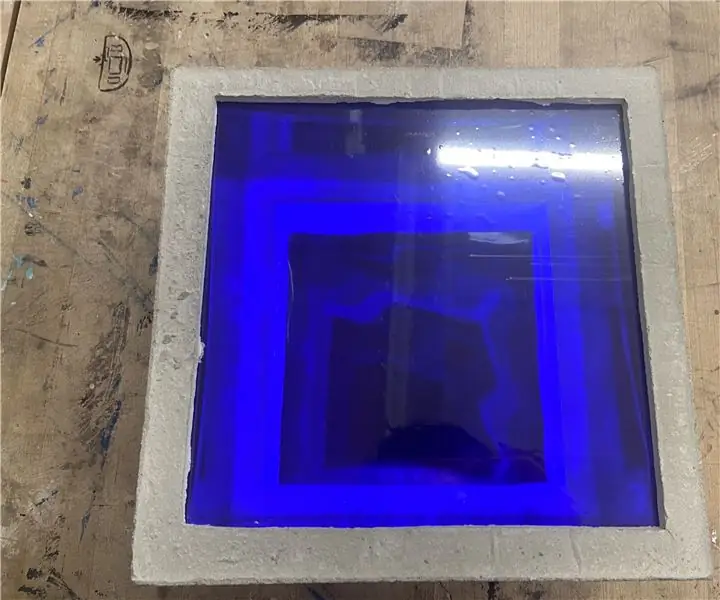
Sommario:
- Autore John Day [email protected].
- Public 2024-01-30 10:01.
- Ultima modifica 2025-01-23 14:49.
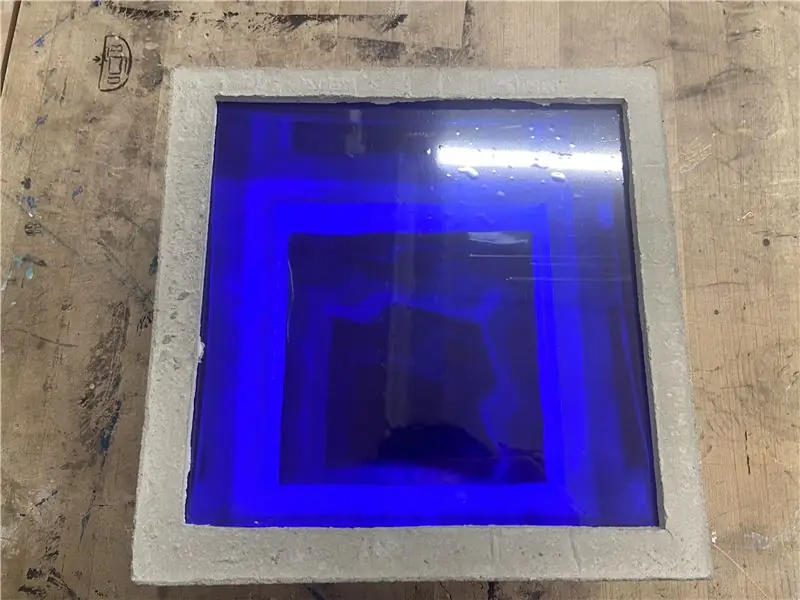
Questa è un'opera d'arte con dispositivo di illuminazione a LED per il mio progetto di scultura chiamato Oggetto sacro. Sto usando questo dispositivo per presentare una voce per un nuovo mondo. Quando accendo la luce LED, possiamo vedere un tunnel infinito all'interno della scatola di cemento. La striscia LED è controllata tramite bluetooth sul mio telefono. Ho acquistato tutte le forniture su Amazon.
Materiali:
- Arduino Uno
-Striscia LED
-9v batteria
-DSD Tech SH-HC-08 Modulo slave Bluetooth 4.0 BLE
-330 Ohm resistore
- i phone
-Calcestruzzo
-Acrilico
-Pellicola per finestre (specchio unidirezionale)
-Pellicola a doppio specchio laterale
Passaggio 1: progettazione del circuito
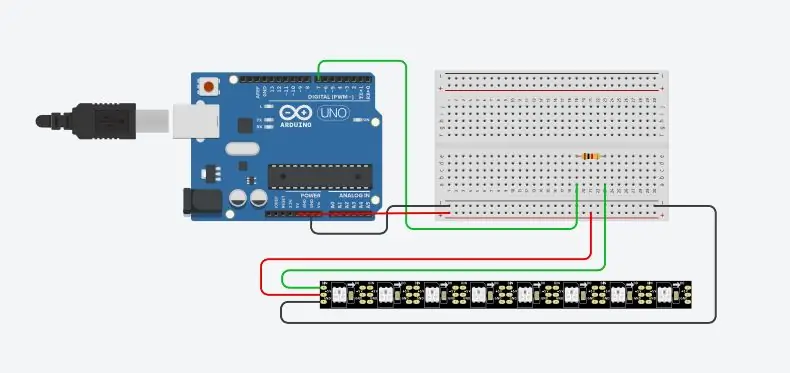

Ecco come faccio funzionare il circuito. Ho anche creato una sequenza per simulare un movimento di onde cerebrali.
La prima immagine è il circuito della striscia LED.
La seconda immagine è il circuito Bluetooth. L'app su iPhone è BluetoothLED.
Passaggio 2: codice Arduino
#includere
#define LED_PIN 7 #define NUM_LEDS 60 led CRGB[NUM_LEDS];
void setup() { pinMode(LED_PIN, OUTPUT); Serial.begin(9600); FastLED.addLeds(leds, NUM_LEDS); }
void setBlue(int val){ for (int i = 0; i< NUM_LEDS; i++) { leds = CRGB(0, 0, val); } FastLED.show(); } ciclo vuoto() {
if(Serial.available()) { val = Serial.read(); } if(val == 'H'){ leds[0] = CRGB(0, 0, 0); FastLED.show(); led[1] = CRGB(0, 0, 0); FastLED.show(); led[2] = CRGB(0, 0, 0); FastLED.show(); led[3] = CRGB(0, 0, 0); FastLED.show(); led[4] = CRGB(0, 0, 0); FastLED.show();
led[5] = CRGB(0, 0, 0); FastLED.show();
led[6] = CRGB(0, 0, 0); FastLED.show();
led[7] = CRGB(0, 0, 0); FastLED.show();
led[8] = CRGB(0, 0, 0); FastLED.show();
led[9] = CRGB(0, 0, 0); FastLED.show();
led[10] = CRGB(0, 0, 0); FastLED.show();
led[11] = CRGB(0, 0, 0); FastLED.show();
led[12] = CRGB(0, 0, 0); FastLED.show();
led[13] = CRGB(0, 0, 0); FastLED.show();
led[14] = CRGB(0, 0, 0); FastLED.show();
led[15] = CRGB(0, 0, 0); FastLED.show();
led[16] = CRGB(0, 0, 0); FastLED.show();
led[17] = CRGB(0, 0, 0); FastLED.show();
led[18] = CRGB(0, 0, 0); FastLED.show();
led[19] = CRGB(0, 0, 0); FastLED.show();
led[20] = CRGB(0, 0, 0); FastLED.show();
led[21] = CRGB(0, 0, 0); FastLED.show();
led[22] = CRGB(0, 0, 0); FastLED.show();
led[23] = CRGB(0, 0, 0); FastLED.show(); led[24] = CRGB(0, 0, 0); FastLED.show();
led[25] = CRGB(0, 0, 0); FastLED.show();
led[26] = CRGB(0, 0, 0); FastLED.show();
led[27] = CRGB(0, 0, 0); FastLED.show();
led[28] = CRGB(0, 0, 0); FastLED.show();
led[29] = CRGB(0, 0, 0); FastLED.show();
led[30] = CRGB(0, 0, 0); FastLED.show(); led[31] = CRGB(0, 0, 0); FastLED.show();
led[32] = CRGB(0, 0, 0); FastLED.show();
led[33] = CRGB(0, 0, 0); FastLED.show(); led[34] = CRGB(0, 0, 0); FastLED.show();
led[35] = CRGB(0, 0, 0); FastLED.show();
led[36] = CRGB(0, 0, 0); FastLED.show();
led[37] = CRGB(0, 0, 0); FastLED.show();
led[38] = CRGB(0, 0, 0); FastLED.show();
led[39] = CRGB(0, 0, 0); FastLED.show();
led[40] = CRGB(0, 0, 0); FastLED.show();
led[41] = CRGB(0, 0, 0); FastLED.show();
led[42] = CRGB(0, 0, 0); FastLED.show();
led[43] = CRGB(0, 0, 0); FastLED.show(); led[44] = CRGB(0, 0, 0); FastLED.show();
led[45] = CRGB(0, 0, 0); FastLED.show();
led[46] = CRGB(0, 0, 0); FastLED.show();
led[47] = CRGB(0, 0, 0); FastLED.show();
led[48] = CRGB(0, 0, 0); FastLED.show();
led[49] = CRGB(0, 0, 0); FastLED.show();
led[50] = CRGB(0, 0, 0); FastLED.show();
led[51] = CRGB(0, 0, 0); FastLED.show();
led[52] = CRGB(0, 0, 0); FastLED.show();
led[53] = CRGB(0, 0, 0); FastLED.show(); led[54] = CRGB(0, 0, 0); FastLED.show();
led[55] = CRGB(0, 0, 0); FastLED.show();
led[56] = CRGB(0, 0, 0); FastLED.show();
led[57] = CRGB(0, 0, 0); FastLED.show();
led[58] = CRGB(0, 0, 0); FastLED.show();
led[59] = CRGB(0, 0, 0); FastLED.show();
ritardo(100); } else { for (int i = 255; i > 0; i--) { setBlue(i); ritardo(10); } for (int i = 0; i < 255; i++) { setBlue(i); ritardo(10); } } }
Passaggio 3: creazione del contenitore



La scatola è in cemento. Uso i pannelli di gommapiuma per realizzare una scatola vuota da gettare con il cemento. Lascia asciugare almeno 24 ore.
Passaggio 4: taglio laser
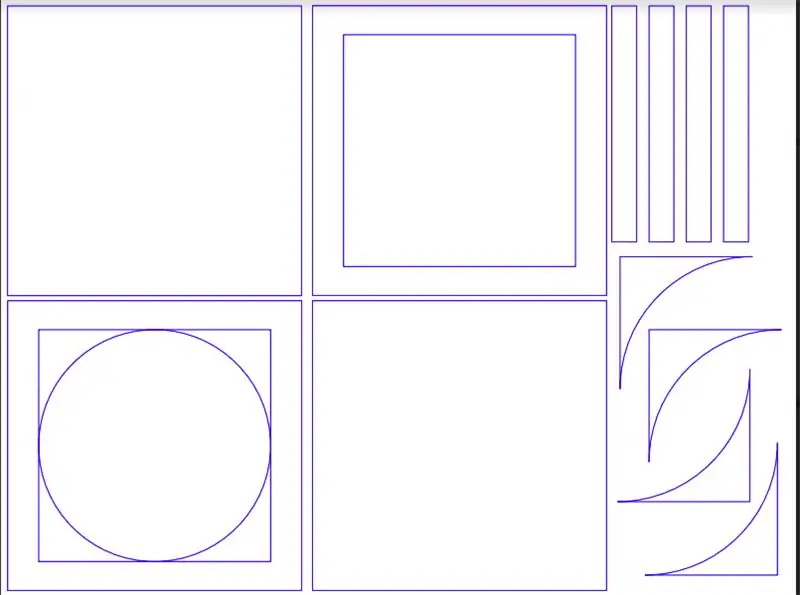


Disegnare la forma si inserisce nella scatola di cemento e tagliarla con il taglio laser.
Lo uso per sovrapporre spazi diversi all'interno della scatola: lo spazio di riflessione e lo spazio del circuito. Ho messo una pellicola per finestre a specchio unidirezionale e una pellicola a doppio specchio laterale sui quadrati acrilici ciascuno.
Passaggio 5: striscia LED

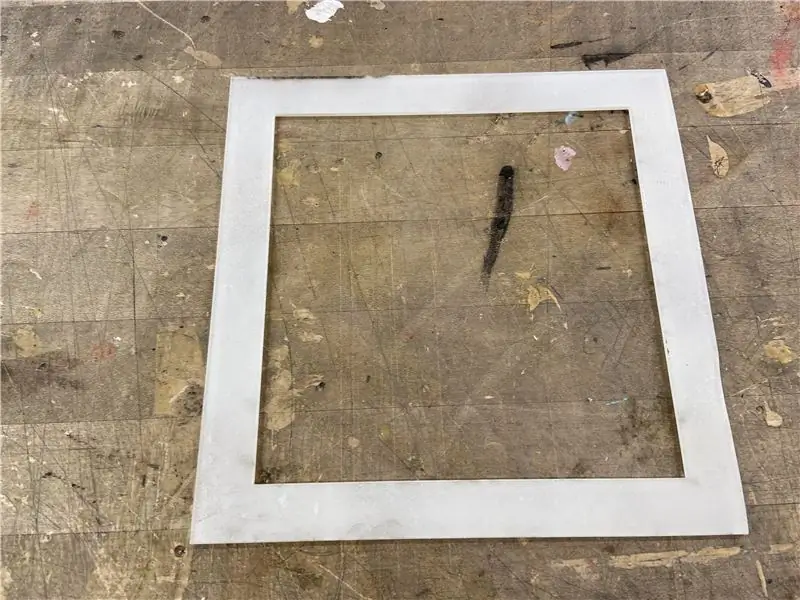
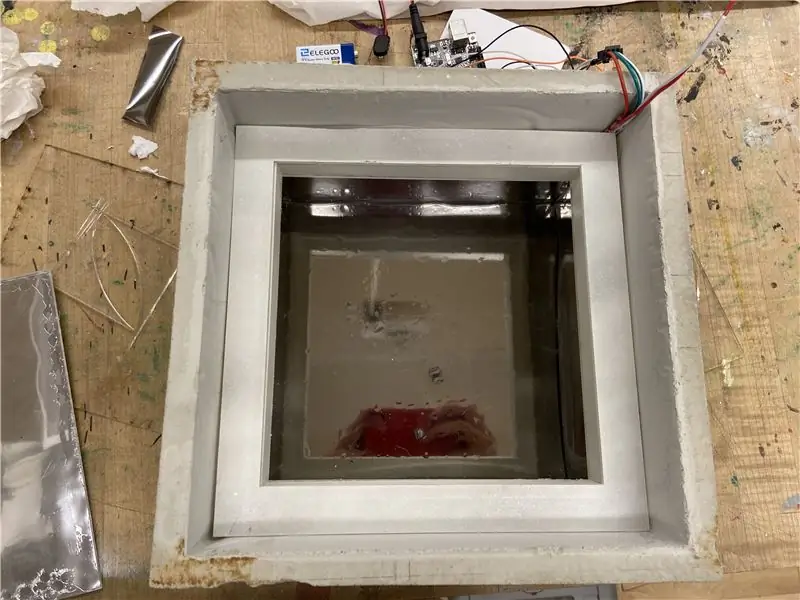
(Vista dal fondo della scatola)
Ho messo prima la pellicola a specchio unidirezionale, il lato dello specchio è rivolto verso l'interno della scatola. E spruzza il colore bianco sul telaio per creare un tubo semitrasparente per la striscia LED e posizionarlo al centro della scatola.
Passaggio 6: circuito
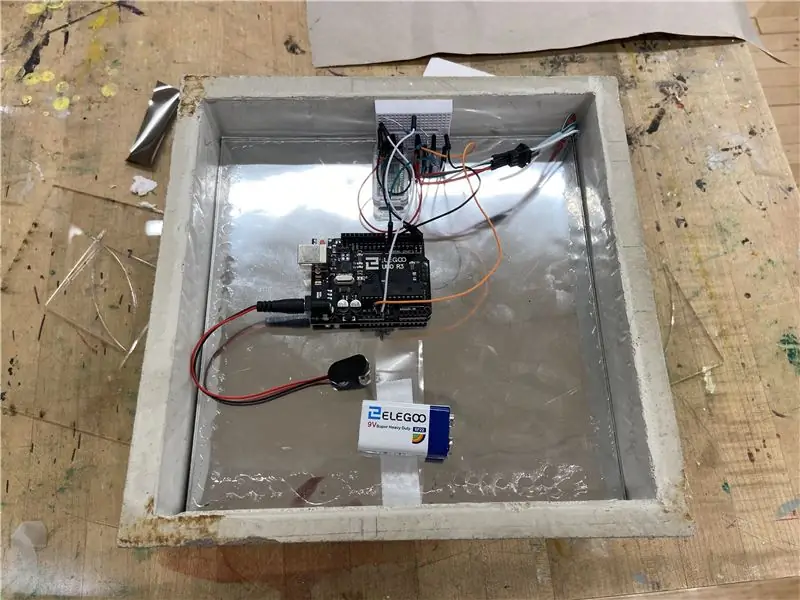
Metti il doppio specchio laterale in acrilico sulla parte superiore del LED e attacca il circuito.
Consigliato:
Coltivare più lattuga in meno spazio o Coltivare lattuga nello spazio, (più o meno).: 10 Passaggi
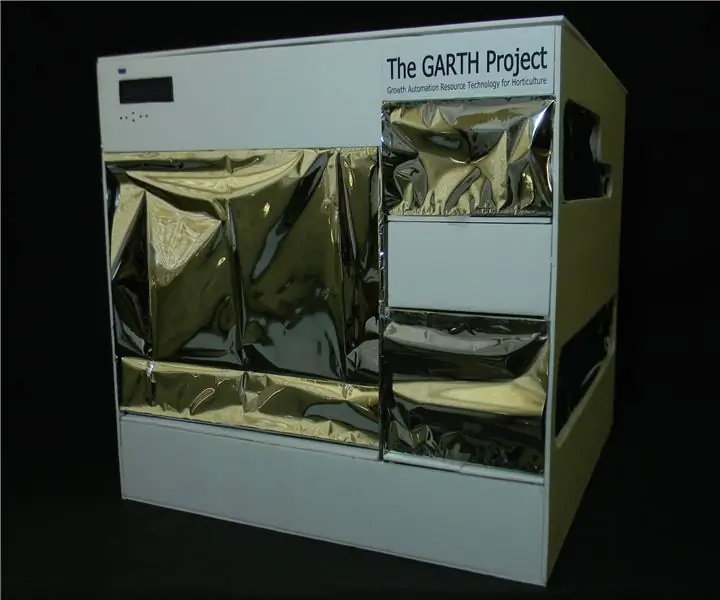
Coltivare più lattuga in meno spazio o… Coltivare lattuga nello spazio, (più o meno): questa è una presentazione professionale al concorso Growing Beyond Earth, Maker, presentata tramite Instructables. Non potrei essere più entusiasta di progettare per la produzione di colture spaziali e di pubblicare il mio primo Instructable. Per iniziare, il concorso ci ha chiesto di
Ingresso seriale a 4 bit e dispositivo di archiviazione: 4 passaggi
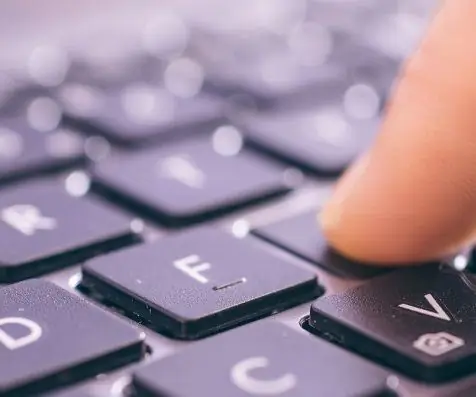
Dispositivo di archiviazione e input seriale a 4 bit: hai mai immaginato come la tua tastiera accetta l'input e come vengono archiviati i dati! Questo progetto è una versione ridotta dell'inserimento e dell'archiviazione dei dati. Una spiegazione elaborata di come il segnale dei tasti, dell'orologio influisca sugli elementi di memoria (infradito)
Dispositivo di ingresso carta e stagnola: 5 passaggi
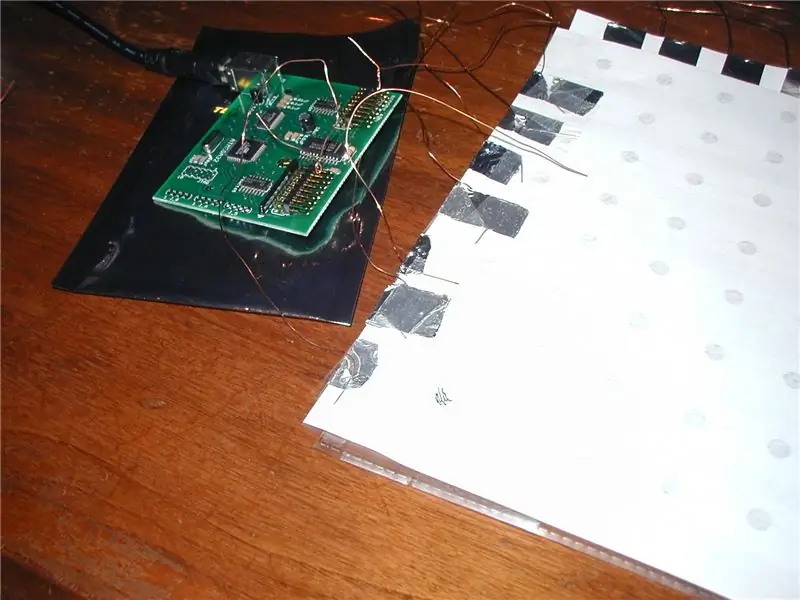
Dispositivo di input in carta e stagnola: questa guida ti mostrerà come creare un dispositivo di input brutto e economico per il tuo computer. In questo sto usando una scheda logica monome 40h per inviare i segnali al computer da una griglia di pulsanti otto per otto, ma questi piani potrebbero essere facilmente modificati per
Supporto rapido per laptop con spazio per gli accessori: 6 passaggi
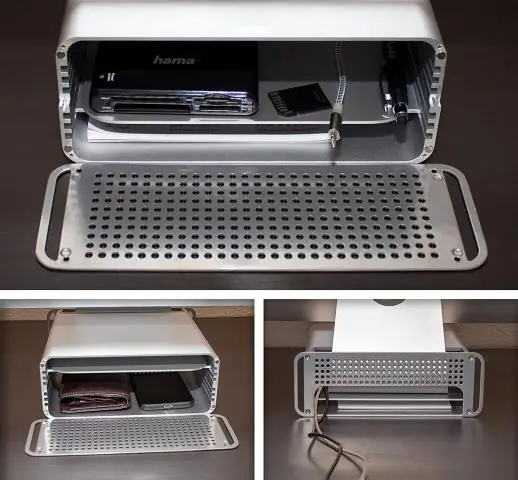
Supporto rapido per laptop con spazio per gli accessori: un giorno mi sono ritrovato a voler collegare due dispositivi USB e il mio mouse e la tastiera con solo due porte USB sul mio computer. Quindi ho capito che avevo bisogno di un hub USB 2.0. (Sì, la tastiera ha due porte USB, ma sono USB 1, non alimentate e molto strette
Supporto inclinabile per amplificatore per chitarra per stack completi o dimezzati con testine separate e altro ancora.: 5 passaggi
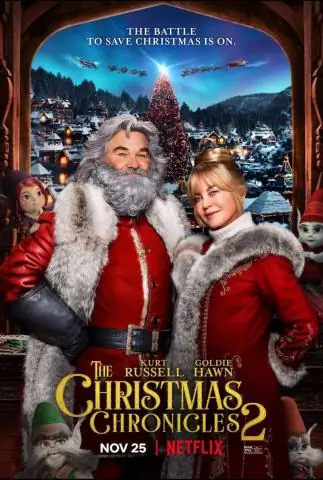
Supporto inclinabile per amplificatore per chitarra per stack completi o dimezzati con testine separate e altro ancora.: So di essere pazzo, ma mi sta bene. L'ho costruito per testare alcune teorie. Il coglione del negozio di musica locale non mi ha permesso di mettere i suoi preziosi nuovi stack Marshall su questo e mi ha fatto scappare. Non posso davvero biasimarlo per essere così meschino
